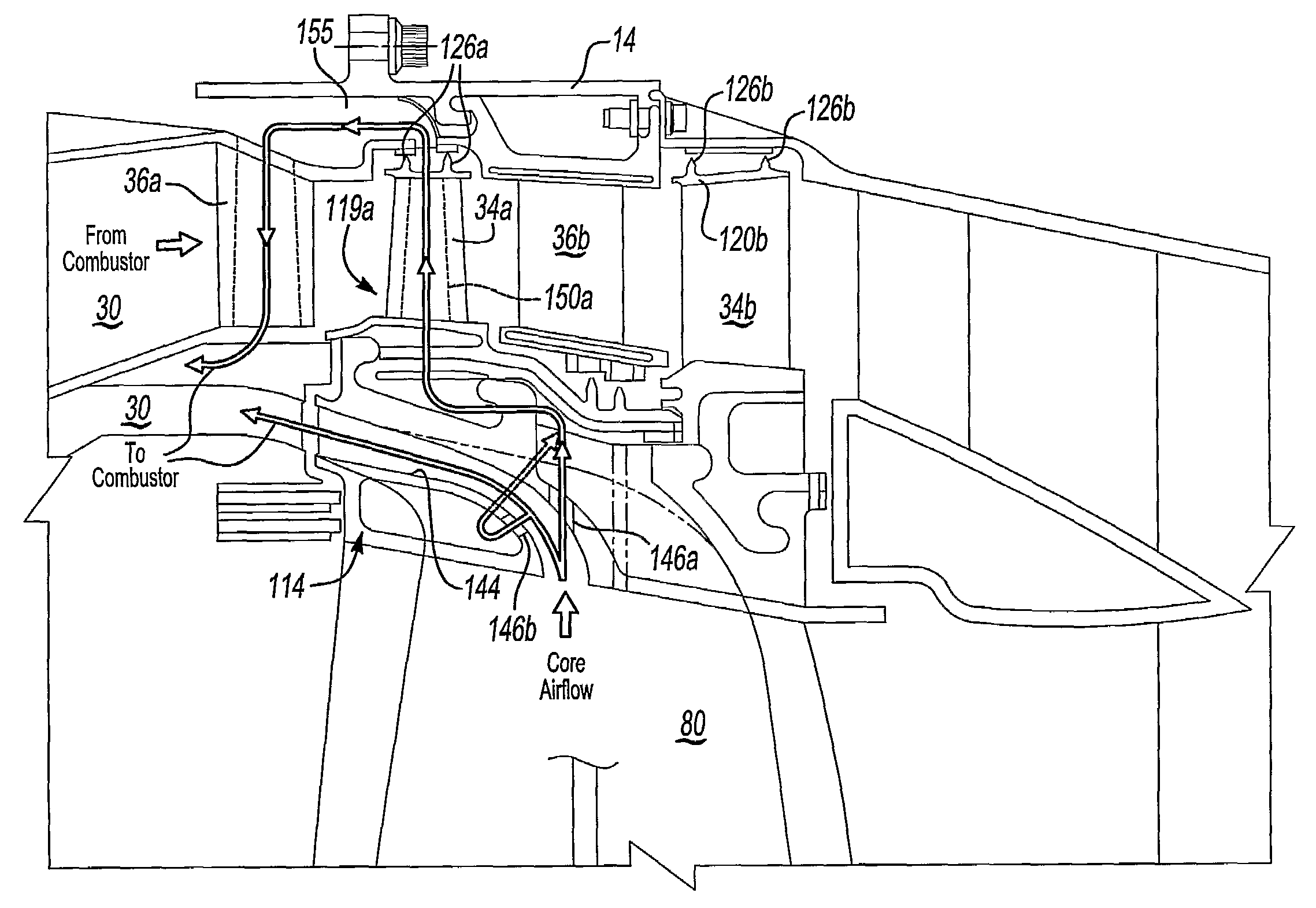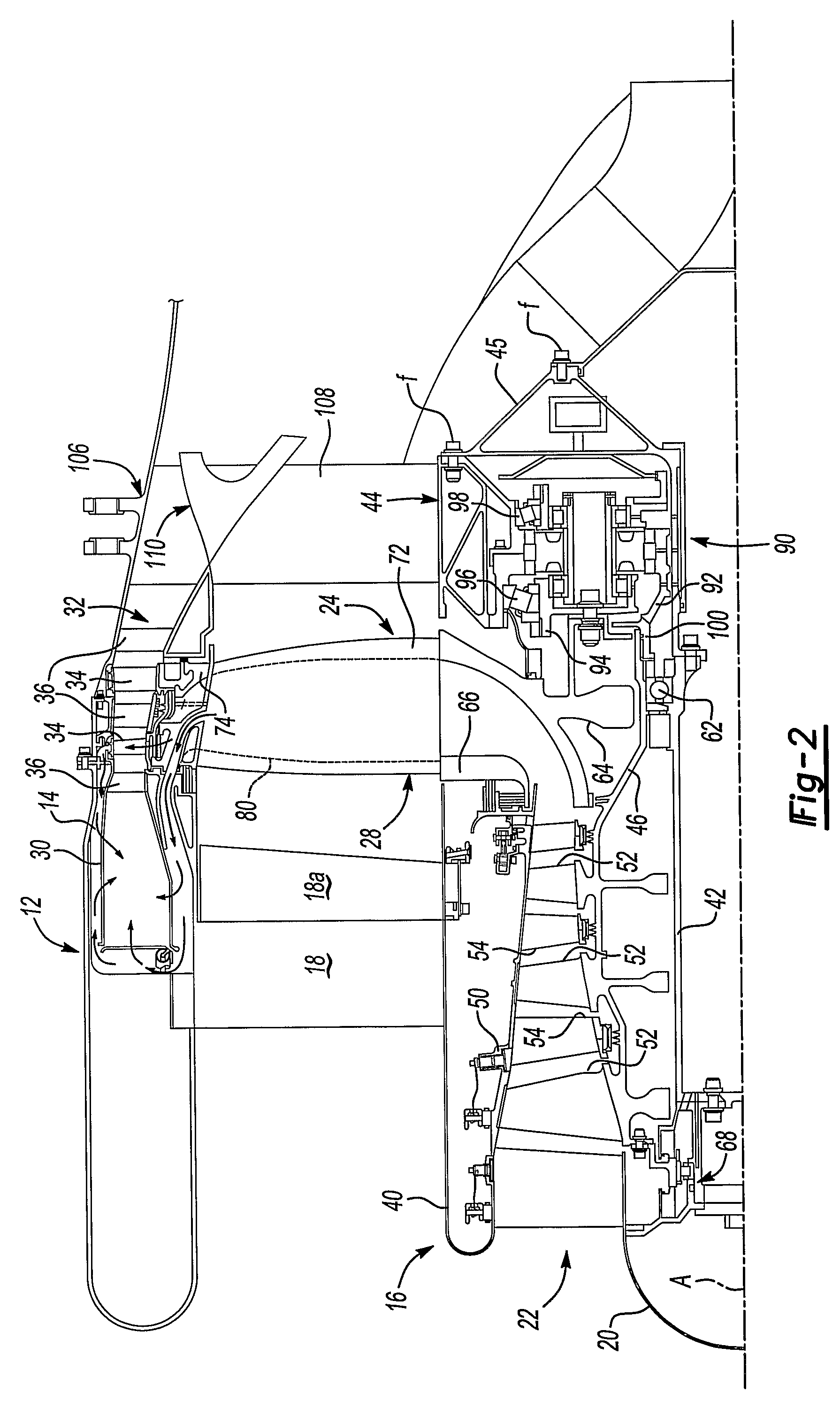Regenerative turbine blade and vane cooling for a tip turbine engine
a tip turbine engine and turbine blade technology, applied in the direction of liquid fuel engines, machines/engines, efficient propulsion technologies, etc., can solve the problems of relative complexity of the engine structure of considerable longitudinal length, inefficient, and inability to reduce the efficiency of the engine, so as to minimize the effect of engine operation efficiency
- Summary
- Abstract
- Description
- Claims
- Application Information
AI Technical Summary
Benefits of technology
Problems solved by technology
Method used
Image
Examples
Embodiment Construction
[0039]FIG. 1 illustrates a general perspective partial sectional view of one embodiment of a tip turbine engine type gas turbine engine 10. The engine 10 includes an outer nacelle 12, a rotationally fixed static outer support structure 14 and a rotationally fixed static inner support structure 16. The engine 10 can also include a multitude of fan inlet guide vanes 18 mounted between the static outer support structure 14 and the static inner support structure 16. Each inlet guide vane 18 could include a separate variable trailing edge 18A which may be selectively articulated relative to the fixed inlet guide vane 18.
[0040]The engine 10 can have a nose cone 20 located along the engine centerline A to smoothly direct airflow near the engine centerline A radially outwardly and into the engine 10. The airflow enters the engine 10 through an axial compressor 22 (“core” or “primary” airflow) or through a fan-turbine rotor assembly 24 (“bypass” or “secondary” airflow). The axial compressor ...
PUM
 Login to View More
Login to View More Abstract
Description
Claims
Application Information
 Login to View More
Login to View More - R&D
- Intellectual Property
- Life Sciences
- Materials
- Tech Scout
- Unparalleled Data Quality
- Higher Quality Content
- 60% Fewer Hallucinations
Browse by: Latest US Patents, China's latest patents, Technical Efficacy Thesaurus, Application Domain, Technology Topic, Popular Technical Reports.
© 2025 PatSnap. All rights reserved.Legal|Privacy policy|Modern Slavery Act Transparency Statement|Sitemap|About US| Contact US: help@patsnap.com



